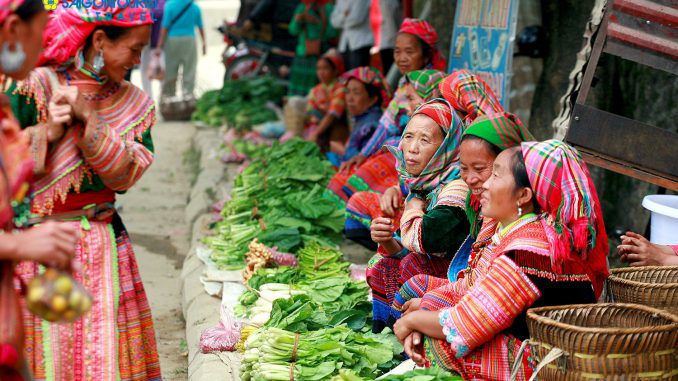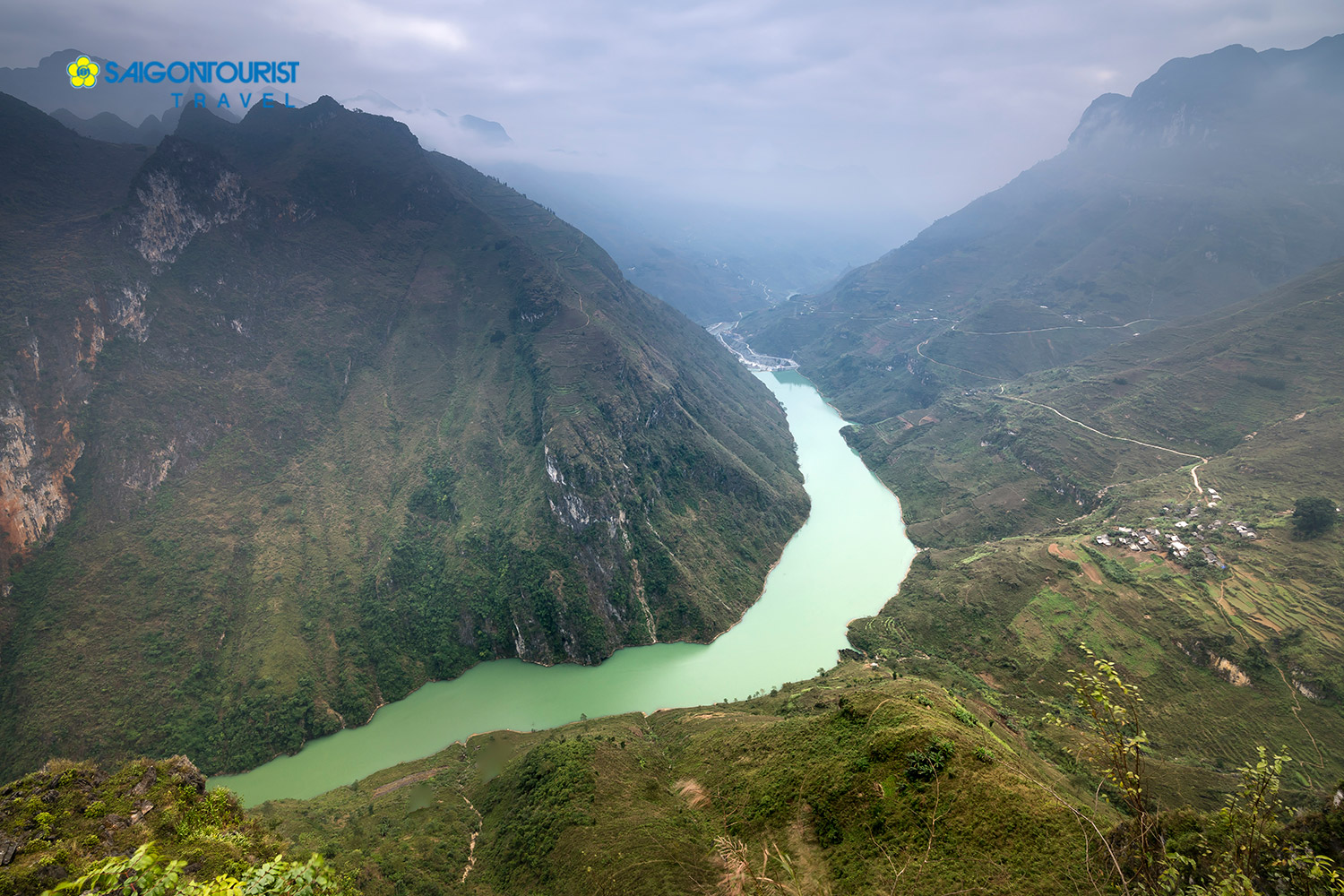

Location:
Located at the highest latitude in Vietnam, Ha Giang is surrounded by Cao Bang on the east, Tuyen Quang on the south, Lao Cai, and Yen Bai on the west. It shares a border with China in the north (274km boundary). à Giang city, the gateway to the province, lies almost 300km from Hanoi.
Ha Giang’s complicated topography is divided into 3 areas. The area on the south has rocky mountain, separated rivers. The west area has sloping mountainside, high pass, valleys, and narrow springs. The low land area includes hills, the valley of Lo River, and Ha Giang Town.
Day and night buses run daily or tours can be arranged from Hanoi. Public transport around the province is limited, so either hiring a motorcycle (available in Hà Giang) or doing this trip with a car and driver is much more convenient.
Characteristics
Just a few kilometres from the provincial capital is Thôn Tha, home to a community of warm Tày minority people living as they have for hundreds of years. Trekking opportunities are plentiful with a small number of well-versed guides. The Quản Bạ Pass holds a lookout that lives up to its name: Heaven’s Gate. Quản Bạ is also the gateway to the UNESCO recognised Đồng Văn Karst Plateau Geopark, a landscape characterised by lofty limestone peaks and rock-strewn fields.
High up near the border with China stands a H’Mông King Palace in the village of Sà Phìn. Built-in 1902 during the French occupation, the wood-framed palace is done in the traditional Chinese style and oozes character. Descendents of the king who called this palace home are still living in the area and sometimes give an unofficial tour.
Make time in your Hà Giang trip to journey north to Lũng Cú, where a gigantic Vietnamese flag blows proudly at the border with China. The best time to arrive is late afternoon as the heat subsides, making the climb of 200 steps a little kinder. The grand mountain view as the sun drops is worth the effort.
The roads that weave paths among this region serve up the ultimate in motorcycle adventure. The drive down into the town of Đồng Văn is impossibly beautiful, and the town holds a small but captivating old quarter with ancient buildings and a market that is a riot of colour every Sunday. The Mã Pí Lèng is the jewel in the crown of Hà Giang’s many stupefyingly stunning stretches of road. The highlight is a lookout point where the road snakes past a deep gorge carved by the Nho Quế River at around 1,500m.
Hà Giang is hugely popular in November because of a festival celebrating the flower bloom that attracts many Vietnamese tourists. September through to November is a good time to visit, and April to June is also pleasant. July and August can be very hot, but navigating a visit is still possible if the midday sun is avoided.